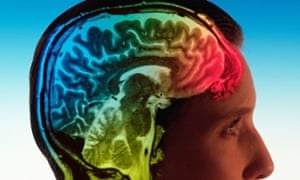A new milestone in non-pharmaceutical treatments for depression

...TMS [transcranial magnetic stimulation] works by sending pulses of magnetic energy across the skull. These magnetic fields induce electric currents to flow in small patches of the brain of around one square centimetre, which in turn causes the neurons in that area to activate - these events take place over fractions of a second. For reasons that are not well understood, spacing out trains of these magnetic pulses leads to more durable effects, lasting for an hour or more after the stimulation - this is known as repetitive TMS, or rTMS. Repeated sessions of rTMS, given every day for several days, exploit the brain’s plasticity to change brain activity for many months. This gives neuroscientists a way to reorganise (never ‘rewire’) small brain circuits.
rTMS treatment for MDD [major depressive disorder] targets the prefrontal cortex, usually in a spot a few centimetres above the corner of the left eye, called the dorsolateral prefrontal cortex (or DLPFC). The cells in this area connect to networks that project throughout the brain, and rTMS has both enhancing and inhibiting effects on distant brain regions. The full extent of these hubs and networks are poorly understood, but it seems clear that modulating the activity of the prefrontal cortex releases neurotransmitters deep in the ancient structures of the midbrain, in particular the caudate nucleus. In turn, these structures regulate our basic motivations and emotions. So by indirectly stimulating these regions, rTMS seems to correct the low mood and listlessness of MDD in some people....
rTMS treatment for MDD [major depressive disorder] targets the prefrontal cortex, usually in a spot a few centimetres above the corner of the left eye, called the dorsolateral prefrontal cortex (or DLPFC). The cells in this area connect to networks that project throughout the brain, and rTMS has both enhancing and inhibiting effects on distant brain regions. The full extent of these hubs and networks are poorly understood, but it seems clear that modulating the activity of the prefrontal cortex releases neurotransmitters deep in the ancient structures of the midbrain, in particular the caudate nucleus. In turn, these structures regulate our basic motivations and emotions. So by indirectly stimulating these regions, rTMS seems to correct the low mood and listlessness of MDD in some people....
For a fuller description go to this Guardian article .


Comments
Post a Comment